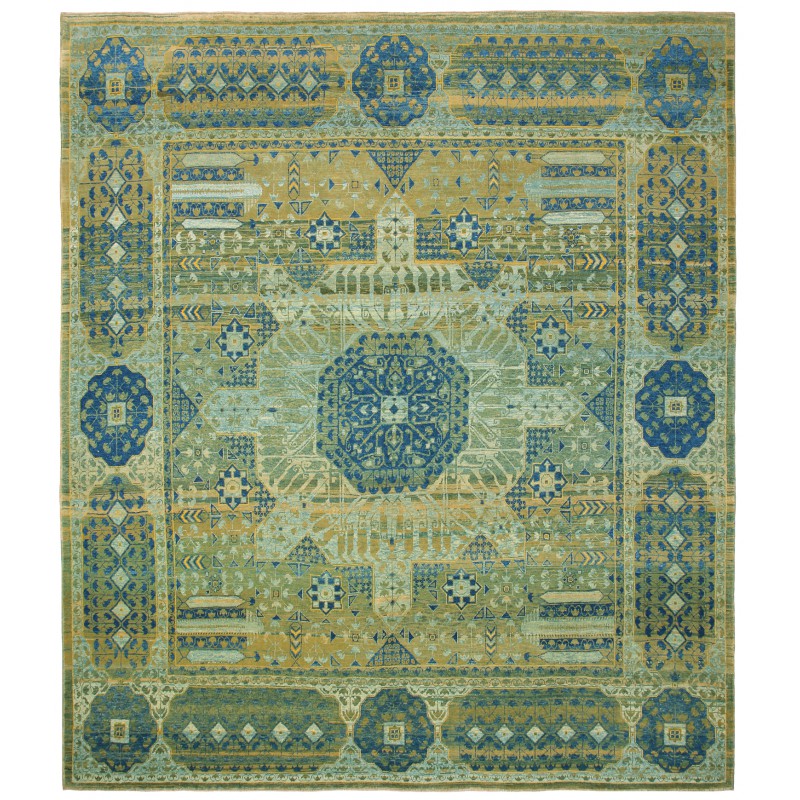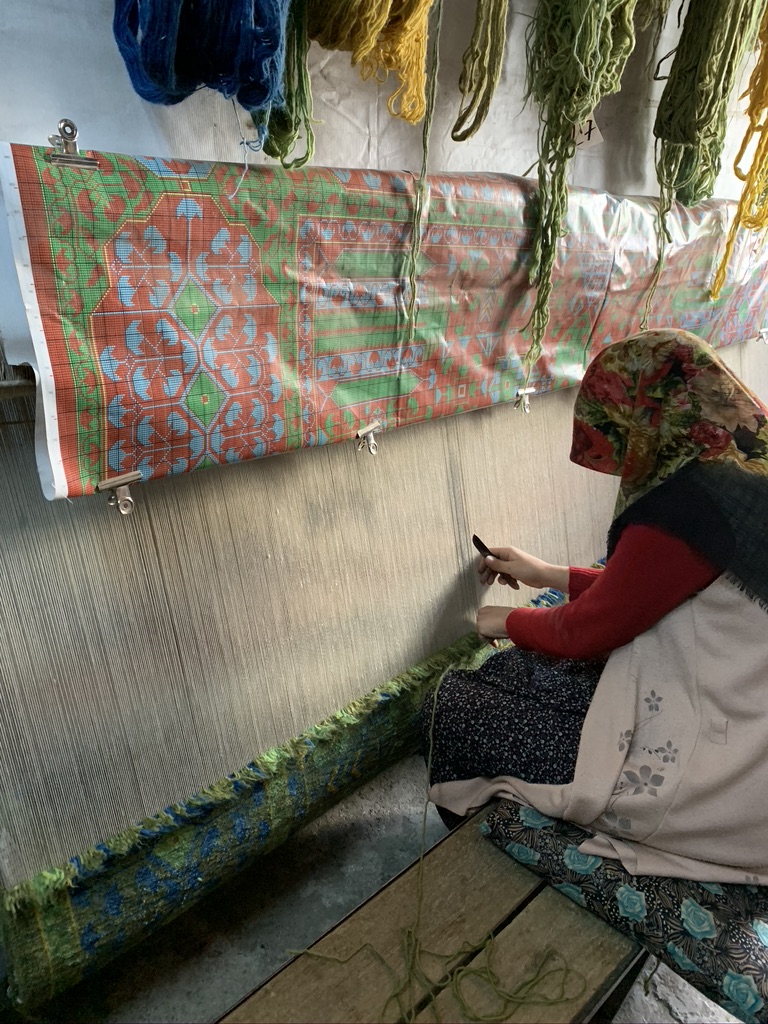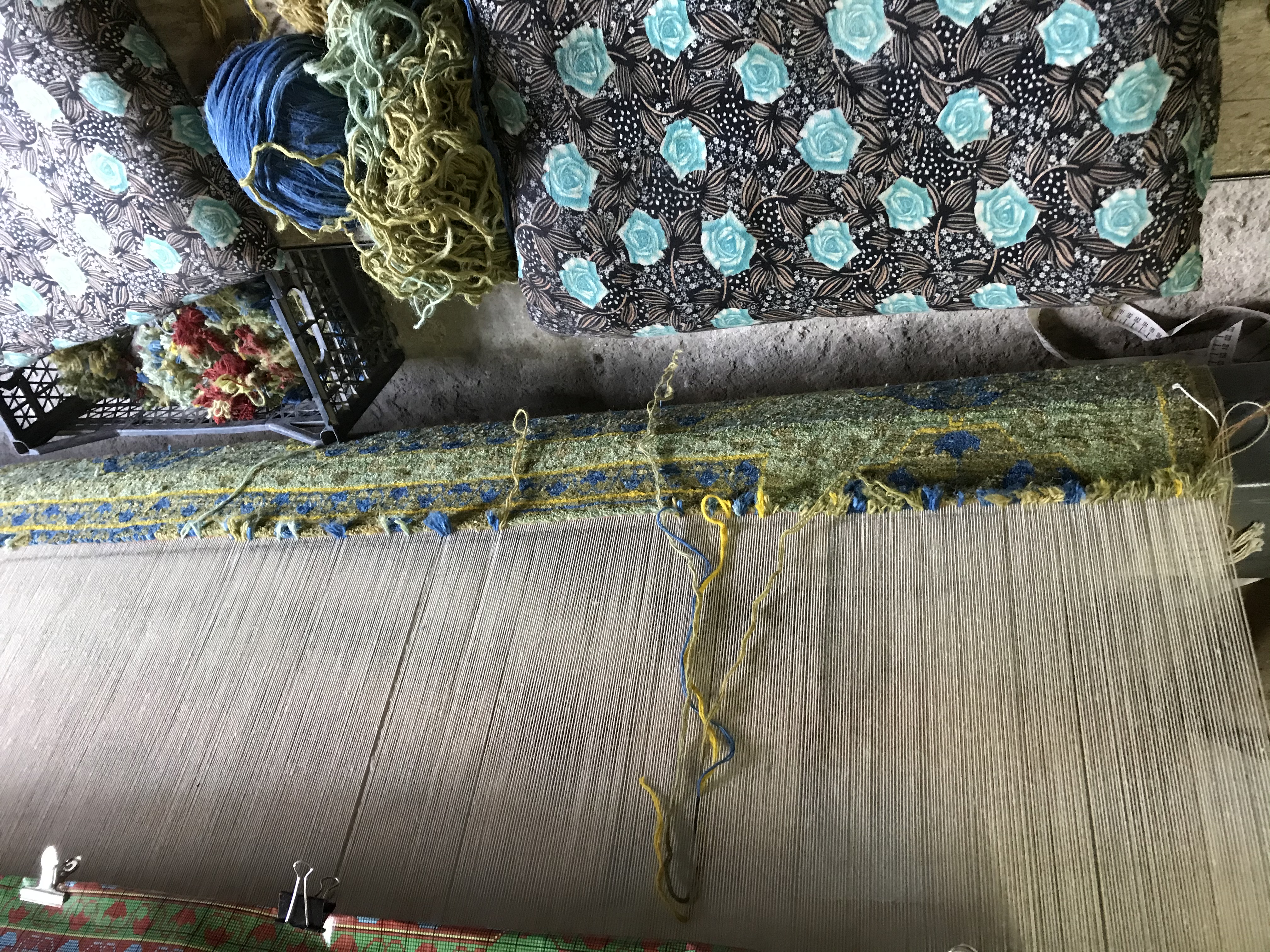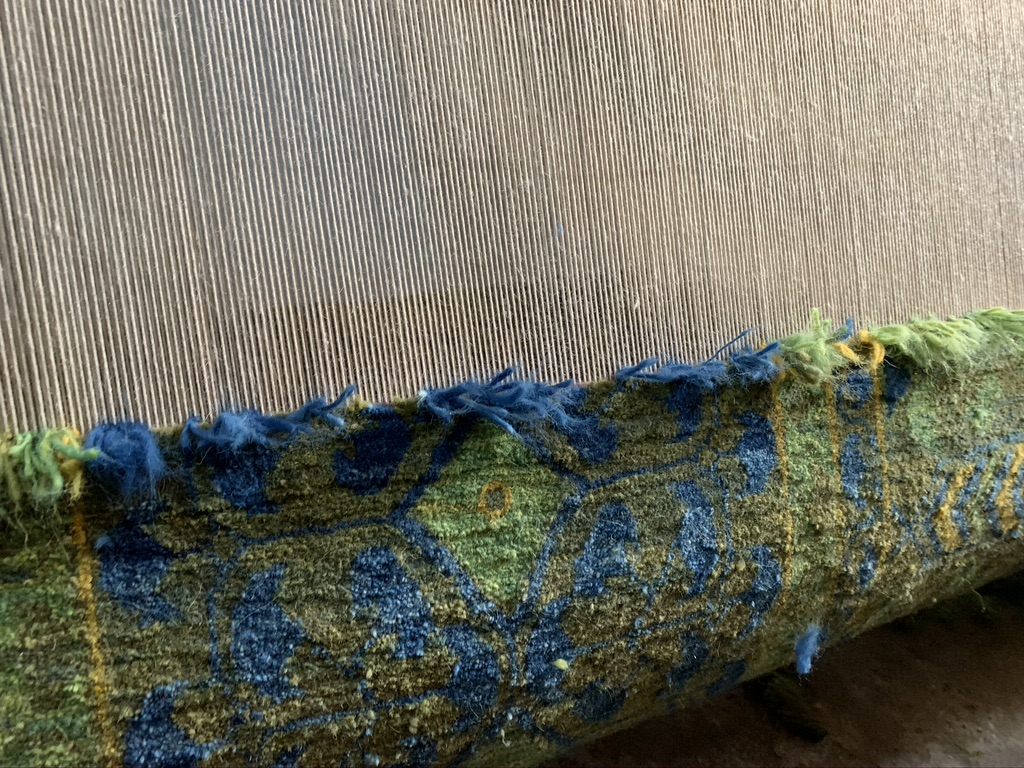
- Stock: 売り切れ
- Model: C40125
- サイズ: 250cm x 283cm
この絨毯の情報源は、ヘルマン・コレクションです。このメディチ・メダリオン付きのラグは、エジプト・カイロのマムルーク・スルタンによって16世紀初頭にデザインされました。メディチ・カーペットと非常に似たもう1つの絨毯は、1983年にアルベルト・ボラレヴィによってフィレンツェのピッティ宮殿で発見され、メディチ・カーペットは既知のマムルーク絨毯の中で最も大きなものです。1557年から1571年の間(ドナルド・キング)またはより明確には1567年(アルベルト・ボラレヴィ)のいずれかの時点で、メディチ家に入った後、注意深く保存されてきました。この絨毯は1983年にヘルマンズ・ギャラリーに出品されました。明らかに、この絨毯は大きな絨毯ほどの存在感はありませんが、デザインは調和が取れており、望ましいサイプレスとヤシの木の要素がフィールドの四隅に繰り返されています。
カイロの工房で生産された初期のカーペットを読み解くことは、まったく異なる一連の課題を提供します。カイロのカイレン絨毯は、限られた色彩パレット、対称的な結び目、異常なS-spunウールの構造(イスラム世界のほとんどで一般的なZ-spunウールが通常です)で特徴付けられ、オスマン帝国がマムルーク帝国を征服した1517年以降、デザインは突然変化しました。シモネッティ・カーペットは征服後に織られた可能性がありますが、マムルークの15世紀のスタイルを持っています。狭く長い形状で、エジプトの標準サイズのローラービーム織機で織られ、異なる長さの絨毯を製造することができました。デザインはA-B-C-B-Aのパターンで、5つの主要な焦点領域で構成されており、第1と第5の領域と第2と第4の領域がペアになっており、中央は独自のデザインです。これらの5つの焦点領域をメダリオンと呼ぶことは容易ですが、レイアウトと詳細の両方で幾何学的であり、そのスタイル(織られた実際の日付とは異なる)はメダリオン形式の絨毯が生まれる絨毯デザインの革命よりも前のものです。マムルーク絨毯のデザインと色彩は、赤、青、緑、そして時に黄色を組み合わせた珍しい組み合わせで、ほとんど無着色の白をほとんど使用しないことから、早期のモダン市場で認識されるブランドを作り出す試みであり、特にヨーロッパでは、このようなマムルーク絨毯は繊細な色合い、非常に詳細なデザイン、モザイクのような小さく入り組んだ幾何学的な模様の配置といった特徴から、アナトリアの粗く織られた明るい色合いのウシャクメダリオン絨毯とは異なる魅力的な選択肢となりました。伝統的な幾何学的なマムルークデザインのカーペットの織りは、おそらく17世紀まで続いたようですが、16世紀中ごろになると、カイロの織り手たちは、伝統的なマムルークの素材、技術、色彩を使用しながら、イスタンブールのオスマンスルタンの宮廷で生まれた最新のスタイルを反映したまったく新しいタイプのカーペットを作り始めました。私たちのデザイナーがこの絨毯のデザインを解釈し、柔らかな色が選ばれています。
The source of the rug comes from the Herrmann Collection. This rug with the Medici Medallion was designed in the early 16th-century rug by Mamluk Sultane of Cairo, Egypt. Only one other rug closely resembles the Medici Carpet, discovered in 1983 by Alberto Boralevi in the Pitti Palace, Florence, the Medici Carpet is the largest of all known Mamluks. It has been preserved carefully since entering the Medici Estate at some time between 1557 and 1571(Donald King)or more definitively,1567(Alberto Boralevi), a piece sold at Lefevre`s on 17 June 1983 at Lefevre`s. It appeared at Herrmann`s Gallery in 1983. Obviously, this carpet does not have the clout of the larger carpet, where the design fully expands, but it is a harmonious design with the desirable cypress-palm tree Elem repeated in all four corners of the field.
Attempting to read early carpets produced in workshops in Cairo provides an entirely different set of challenges. Cairene carpets, distinguished by their limited color palette, symmetrical knotting, and unusual construction of S-spun wool (Z-spun wool being the norm almost everywhere in the Islamic world), underwent a sudden change in design sometime after the Ottoman Turks conquered the Mamluk Empire in 1517. The Simonetti Carpet was probably woven after the conquest but exhibits the “old” fifteenth-century style of the Mamluks. Long and narrow, it was woven on a standard-sized Egyptian roller-beam loom, capable of producing carpets of varying lengths. It consists of five major focal areas of design in an A-B-C-B-A pattern, meaning the first and fifth and the second and fourth areas are paired, while the middle is unique. We can easily term these five focal areas medallions, but they are geometric in both layout and detail, and their style (as opposed to the actual date of the weaving) predates the carpet design revolution that gave rise to the medallion format. We can surmise that the designs and colors of Mamluk carpets, with their unusual combination of insect-derived red, blue, green, and sometimes yellow, with virtually no undyed white at all, constitute an effort to create a recognizable brand in the early modern market, especially in Europe, where Mamluk carpets such as this, with their subtle coloration, incredibly detailed design, and mosaic-like layout of small and intricately patterned geometric motifs, constituted an appealing alternative to the more coarsely woven and brightly colored carpets from Anatolia, such as Ushak medallion carpets. While the weaving of carpets in the traditional geometric Mamluk designs apparently continued well into the seventeenth century, sometime around the mid-sixteenth century, Cairene weavers began to create an entirely new kind of carpet, using their traditional Mamluk materials, technique, and coloration but reflecting the latest styles then being created at the court of the Ottoman sultans in Istanbul. The design of the rug is interpreted by our designers, and soft colors are chosen for this rug.



